This summer, Pure Earth’s head of research, Dr. Jack Caravanos, visited Ukraine with his students from NYU’s College of Public Health. In addition to Chernobyl, probably the best-known polluted site in the country, the group also visited Radikal, an abandoned factory located just north of Kiev that is filled with mercury. Their guide for that site was Pure Earth Ukraine’s Dr. Valeriia Kovach.
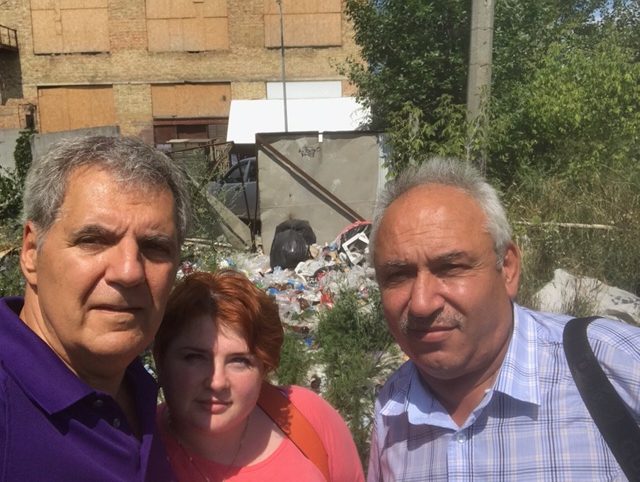
Dr. Jack Caravanos with Dr. Valeriia Kovach and Anatoly Operchuk of the Public Health Center of Kiev at the Radikal site.
Radikal
Dr. Caravanos met up with the Dr. Kovach to visit this old, abandoned chemical plant, which used mercury extensively in the manufacturing process. An earlier visit in 2006 had revealed pools of liquid mercury throughout the site. Regrettably the site is little changed since then.
To make matters worse urban development is encroaching on the site with a shopping center practically across the street. We hope the Ukrainian government will place this site on a priority list to be cleaned up, and we stand ready to help.
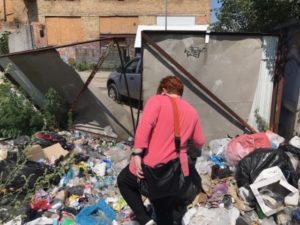
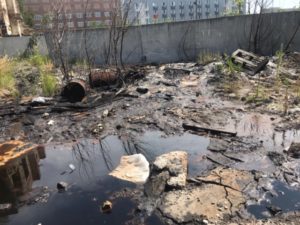
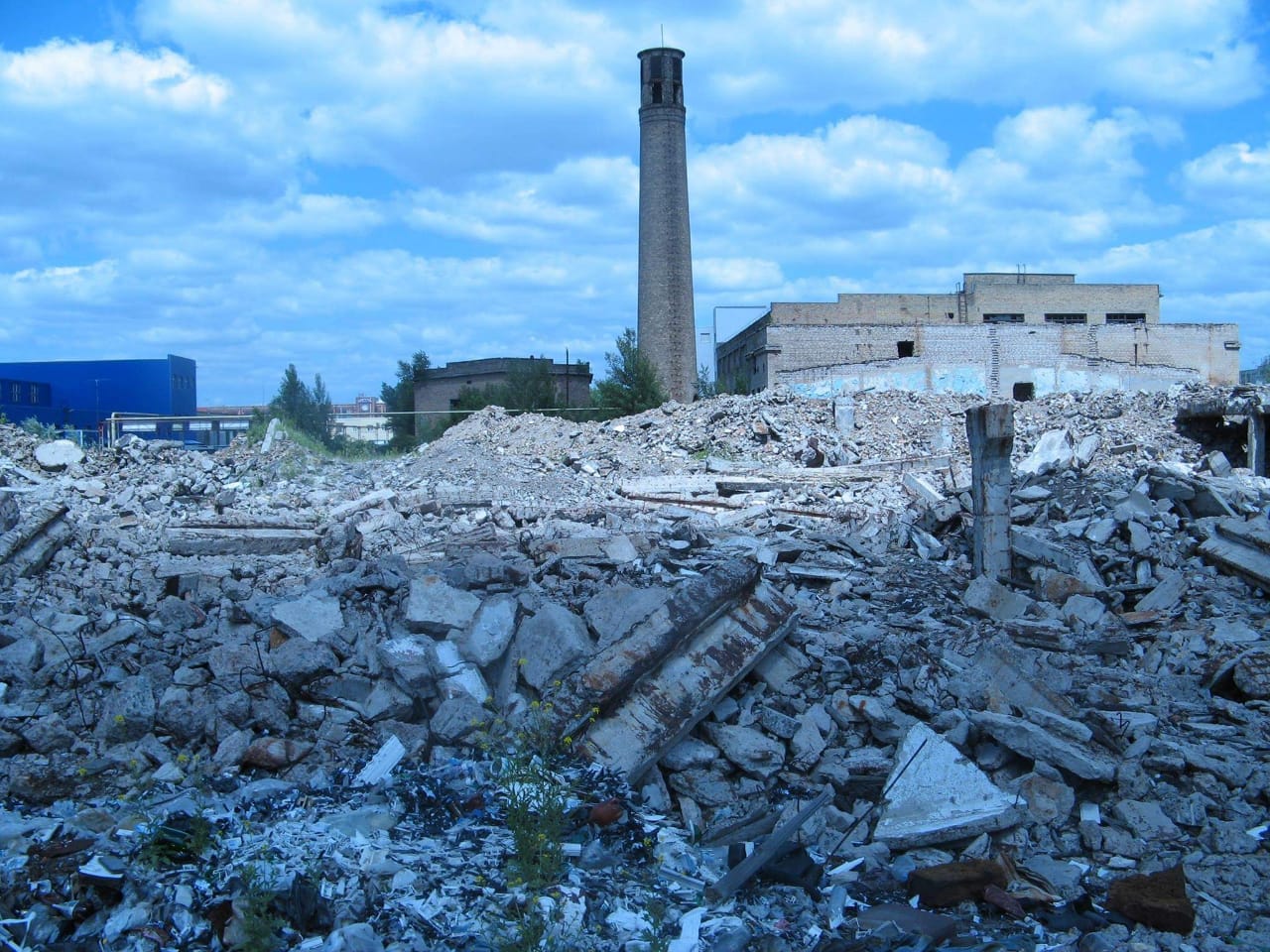
Chernobyl
Dr. Caravanos was also able to schedule a visit to the Chernobyl Nuclear Power Plant complex. Needless to say, the site has become even more popular given the HBO series.
The Chernobyl nuclear power plant site is a very large complex which held four nuclear reactors. It was to be a model of nuclear energy supplying the USSR with inexpensive power. However the April 26th 1986 accident changed all that. Today, the site is visited by over 70,000 people a year.
Dr. Caravanos and his team participated in an exhausting 12-hour tour of the facility. The faculty rented radiation dosimeters (Geiger counters) to hunt for hot spots. Dr. Caravanos, who carries his own dosimeter, had visited the site in February 2009 before the permanent USD$1 billion radiation enclosure was installed. Radiation levels at the Chernobyl monument were substantially lower during this visit. However, the guides did take the team to various hot spots so the group could measure radiation and listen to the endless “clicking” of radioactive decay. The highest reading at a hotspot where contaminated material was buried was 42 micro Sieverts per hour (mSv/hr). This is about 400 times the background radiation level in the USA. However, the short exposure time (minutes) didn’t amount to much additional risk (see table below).
Overall, the team strongly recommends anyone going to Ukraine to visit this historic and fascinating site. The abandoned city of Pripyat, home to 50,000 Chernobyl workers and their families, sits hauntingly silent. This is an extreme example of pollution’s impact.
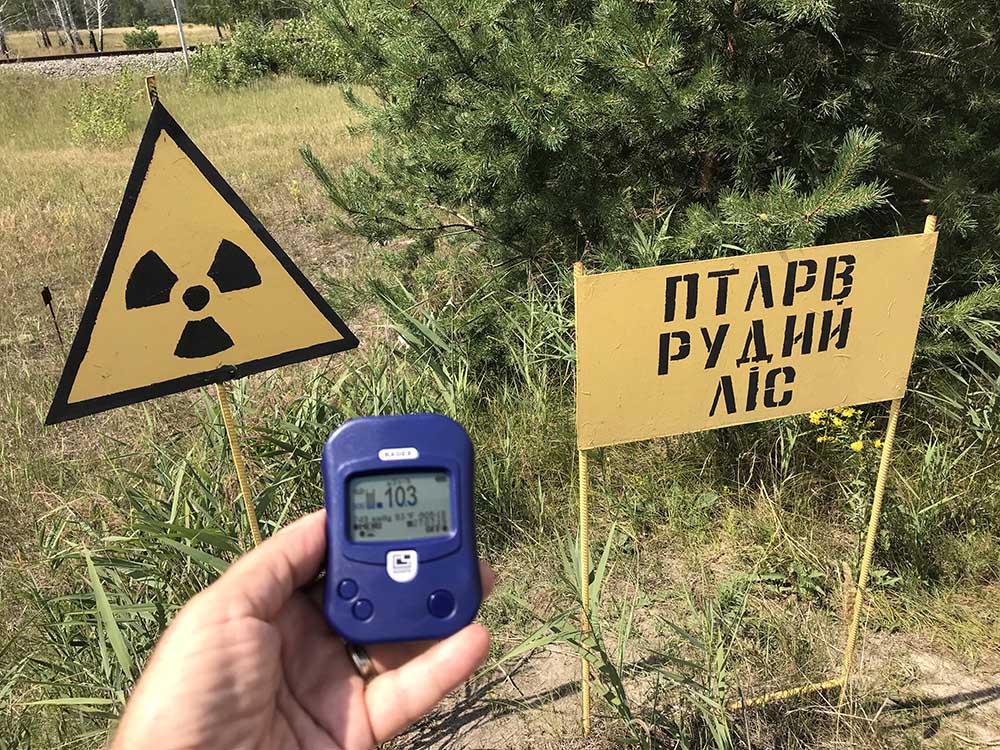 A hotspot in Chernobyl.
A hotspot in Chernobyl.
Chernobyl Sites (assuming 1 hour exposure time):
- Background at Chernobyl/Pripyat 1 mSv
- Chernobyl reactor site 3-4 mSv
- Hotspots (that we visited) 10-40 mSv
Other Radiation Sources:
- Background in NYC 0.1 mSv
- Air travel (35,000 feet) 3-4 mSv
- Dental X-ray 10 mSv
- Chest X-ray 100 mSv
- Mammogram 400 mSv
- CT scan (spinal) 6000 mSv
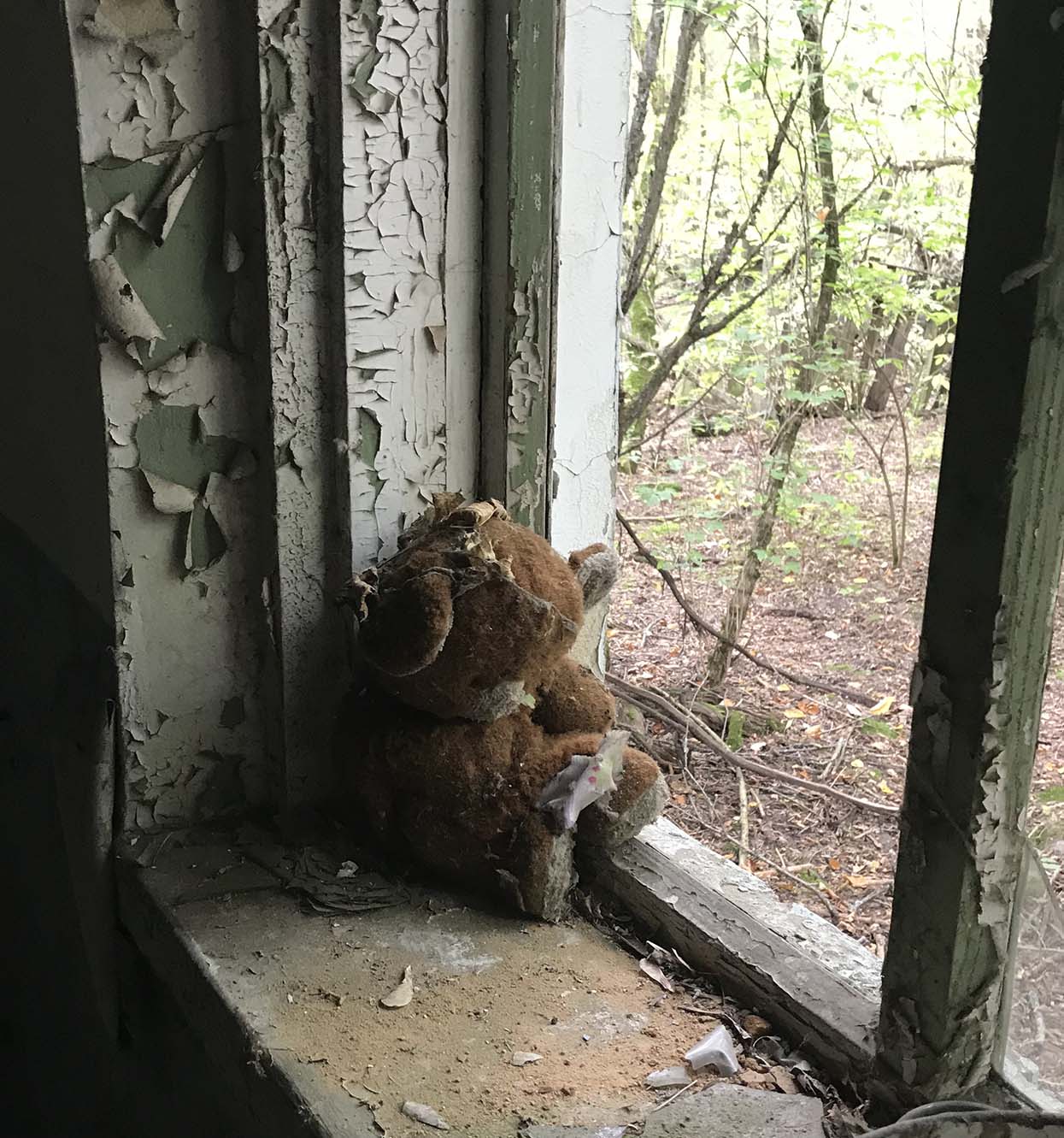
Related:
Radiation 101: What is it, how much is dangerous, and how does Fukushima compare to Chernobyl?





